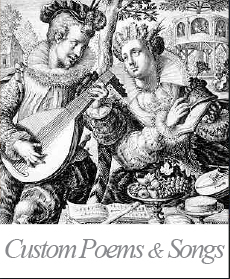Poetry Education
 BY NAILA SCHULTE (CLAUDIA SCHULTE, Ed.D.)
BY NAILA SCHULTE (CLAUDIA SCHULTE, Ed.D.)
Mining for Gold: Poetry Writing in the Secondary ESL Classroom
(equally applicable to non-ESL settings)
Poetry and the Enhancement of Language Arts Education
(rationale and bibliography)
Circles of Meaning: Group discussion of poetry-based vocabulary tasks from a
sociocultural perspective (Temple Univ. dissertation)

LEV VYGOTSKY
Lev Vygotsky (1896-1934) was the brilliant Renaissance man who transformed Russian psychology without any formal training in the field. A pioneer in developmental education, he understood how cognitive thought develops through, and continues to interact fluidly with, our sensory impressions and emotions. He loved poetry and used to read it to his children. While we don't know if he ever wrote specifically about its pedagogical potential since much of his output was destroyed, many of his existing writings support its importance indirectly
"[Education should encourage] liberation from earlier, more primitive forms of cognition [and promote] advanced forms of imagination. . . . A more profound penetration of reality demands that consciousness attain a freer relationship to the elements of that reality, that consciousness depart from the external and apparent aspect of reality that is given directly in perception."
Vygotsky, L.S. (1987). Imagination and its development in childhood. In W. Rieber & A. Carlton (Eds.), The Collected Works of L.S. Vygotsky, Vol. 1 (pp. 339-350). New York: Plenum Press.
Lev Vygotsky Archive: http://www.phillwebb.net/topics/human/Vygotsky/Vygotsky.htm
AKHTER AHSEN
The work of Dr. Akhter Ahsen has profound implications for poetry education. He describes the continuum between the physical senses, the emotions, visual imagery, and mental cognition -- which is a lot of what poetry is all about. Not surprisingly, he's a poet himself.
Akhter Ahsen, Ph.D., is the founder of Eidetic Imagery, a cutting edge and innovative field in modern psychology. His work since the early 50's make him the principal theorist in the field of imagery-based techniques and programs for personal growth.
Dr. Ahsen made a breakthrough discovery in this field when he found that images (I) were more than simply visual--that they had two other components; the somatic(S), an emotion or body sensation, and the meaning (M) contained in the image experience. Ahsen's discovery of the I-S-M model was monumental because it allows control of the triggers in the brain, which impede performance and inhibit one's natural genetic expression. (from www.imagepsychology.com)
Ahsen, A. (1984). ISM: The triple code model for imagery and psychophysiology. Journal of Mental Imagery, 8(4), 15-42
(not online)
Images: Mind in the Body (Akhter Ahsen recent short video)
http://www.youtube.com/watch?v=WFmKerVrTDY
The Eidetic Dancer With the Light
Dr. Akhter Ahsen and Janet K. Bloom
http://www.imagegrove.org/EideticImaging/Writings_on_LI_files/TheEideticDancer.pdf





